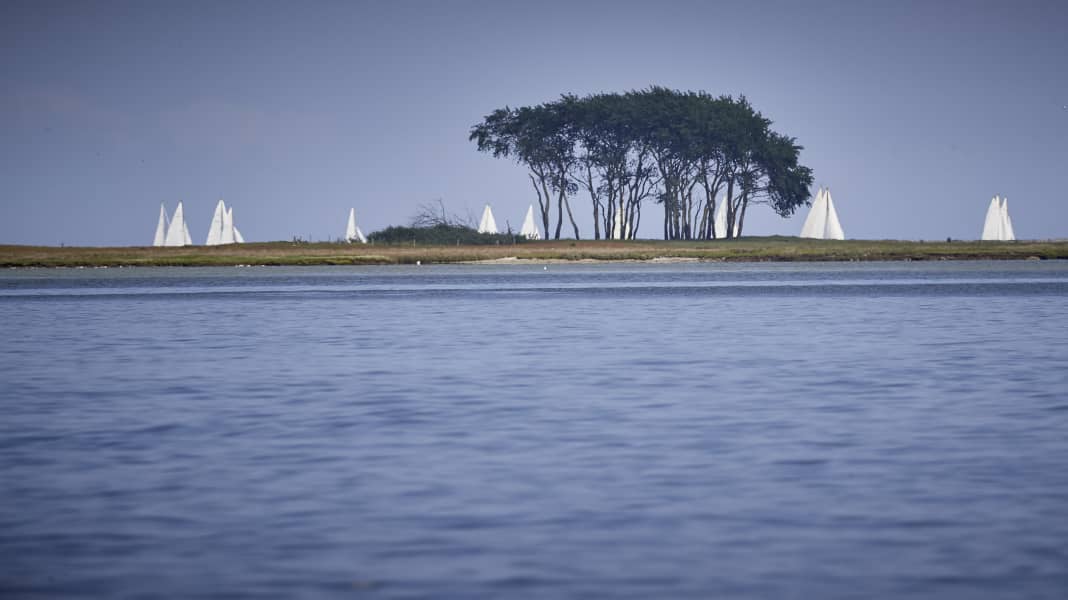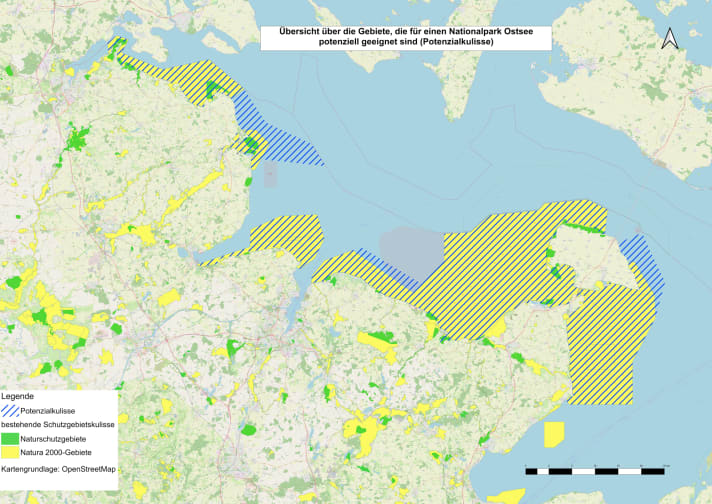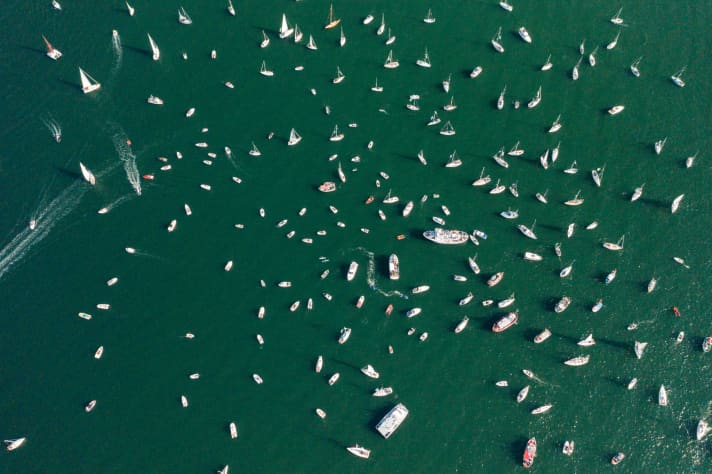Baltic Sea National Park: Consultations with sailors concluded, now the politicians decide
Lasse Johannsen
· 26.02.2024

In February, the consultation process on the planned Baltic Sea National Park ended with a Final report. The Schleswig-Holstein state government now wants to vote on the project in mid-March. A political majority is unlikely to be achieved. Nevertheless, the coalition agreement obliges the government of the state between the seas to initiate measures to protect the Baltic Sea during the current legislative period. This is why other options are now being discussed. The Schleswig-Holstein Sailing Association (SVSH) would like to be involved. The association's upcoming Sailing Day will also focus on the topic of sustainability in sailing. Flensburg lawyer Hans Köster is responsible for environmental protection at the SVSH. In an interview with YACHT, he explains what is important to him.
Mr Köster, a political decision on the national park is due to be taken soon. Are you satisfied with the consultation process?
From my point of view, it was incomplete.
What did you miss during the discussions on the Baltic Sea National Park?
Facts and arguments. Why, where, when and how water sports enthusiasts are restricted by a national park and what levers the Baltic Sea National Park sets in motion for water protection.
That was not answered?
No. Not until today.
What facts were you specifically missing?
We know the problems of the Baltic Sea. We also know their causes. And in an open-ended dialogue, a proposed measure that is intended to help solve the problem must be shown to do so. And the purpose-means relationship must be right. For example, if water sports contribute significantly to the over-fertilisation of the Baltic Sea, a sewage tank can be prescribed.

What did you bring to the discussion?
I have tried to make it clear that no sailor will stand in the way of sensible solutions to protect the Baltic Sea."
The fact that the Baltic Sea is now so much in the spotlight can also be seen in a positive light ...
Of course, but the fact that water protection is generally necessary was not something that had to be pointed out to sailors as a result of this national park debate.
But the conversation has become more intense.
It has become more intense and it has touched every sailor more directly. So I think people are questioning their own actions more. And perhaps one or two of them will also have thought in the back of their minds: what can I do to prevent this?

Are you alluding to measures such as procedural bans?
Yes, exactly. No sailor will slam the door if we have sensible explanations for measures. But they have to be given by the ministry and also plausibly confirmed by a third party, a specialist. We will all say that we will listen to this and try to find the best solution. Whether it has to be a Baltic Sea National Park from a regulatory point of view is now being questioned from all sides.
Why?
Because this is accompanied by a blanket restriction on use of 50 per cent of the total area, without individual consideration of the respective areas. And we want a means-ends relationship to be taken into account in order to achieve the most effective protection of the Baltic Sea with as few restrictions as possible. Effective measures where it is really necessary and where it makes sense.
An example?
Take anchoring bans, for example. If it is plausibly justified that seagrass beds or reefs need to be protected, then you can sit down with the experts and discuss how best to do this.
What do you say to the argument that no protection of the Baltic Sea can be achieved in such a small area as the planned national park?
Well, that's a killer argument. We sailors have an interest in having intact seagrass meadows on the coasts. And it doesn't really matter whether 0.4 or 40 per cent of the Baltic Sea is a seagrass meadow. Quite apart from the overall impact, we should be concerned with protecting our native coastline and preserving our area as it is. That should be the goal of us all. But of course we have to pay very close attention to whether protective measures are proportionate.

How can we ensure that organised sailing has a seat at the table in decision-making processes such as the upcoming one?
A very good question - that is precisely our aim. Or, to put it another way, our offer to politicians. I have said this to Mr Goldschmidt several times. We can discuss everything and agree targets within the framework of voluntary agreements, for example. From our point of view, however, this would also mean that we want to accompany such a process and evaluate what the measures achieve.
Don't you think that the Baltic Sea National Park is also about placing large areas under protection in order to fulfil figures that are required under European law?
You mention the Biodiversity Directive. These are of course number games. If that were the case, I would have expected it to be discussed openly. That wouldn't have been a bad thing, on the contrary, it would have added to the plausibility. However, we would then have asked under what protection exactly. And we would have insisted on choosing the lowest level of protection required for the intended purpose. Because under protection is under protection. But that could have been discussed with solid arguments. But that was not even discussed.
That would have been a good chance to make the project more credible ...
Yes, that is tragic. It has basically damaged the political process. It's like being on board. If I sail towards the leeward barrel at eight knots under spinnaker and don't communicate with my crew, then the manoeuvre goes down the drain. It won't work. And it's the same here. If the minister wants to get the stakeholders on board in order to reach the goal, he has to communicate with them. Otherwise that will also backfire. And unfortunately that's what happened. We all know it. The failed investor.

